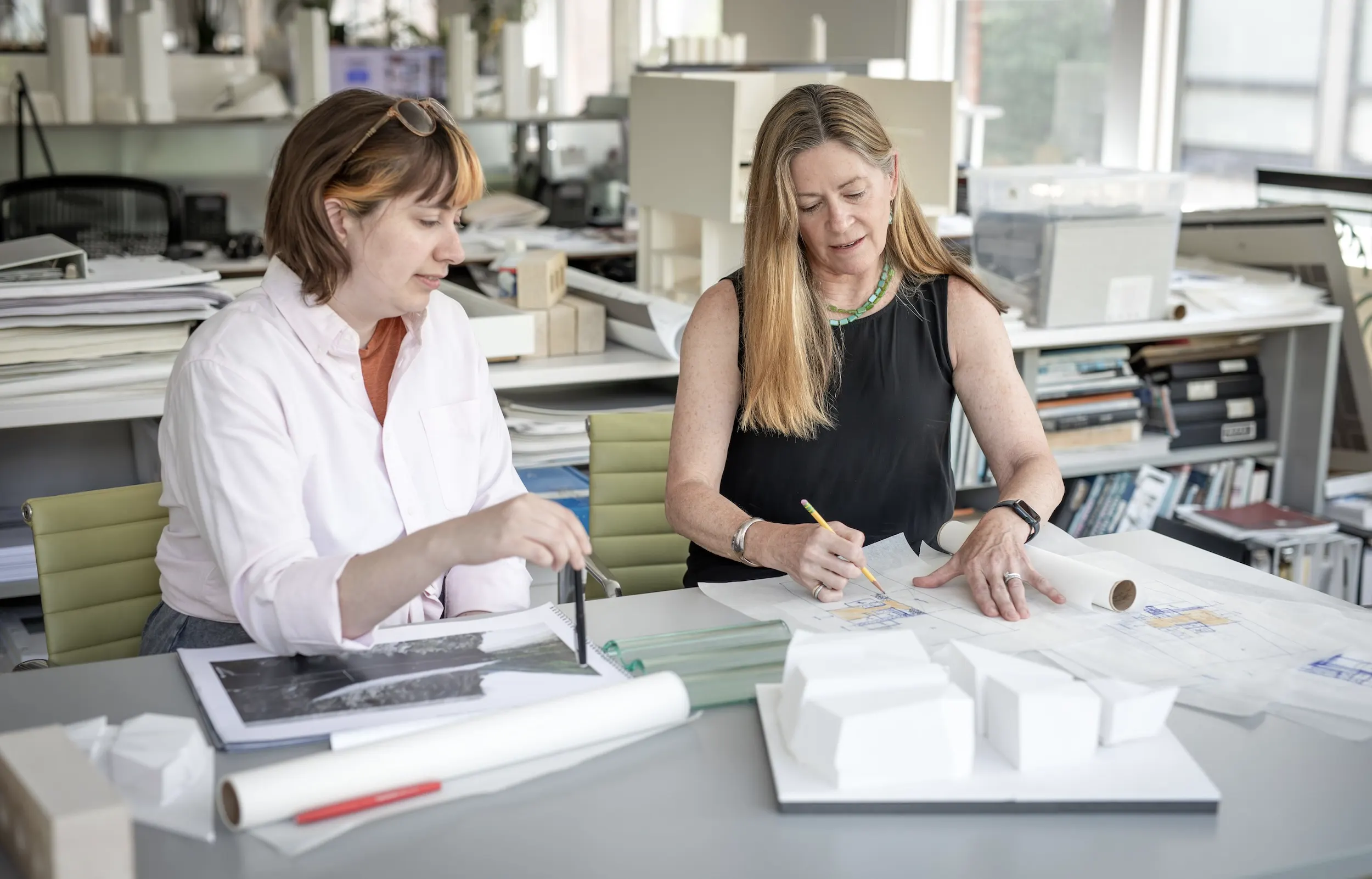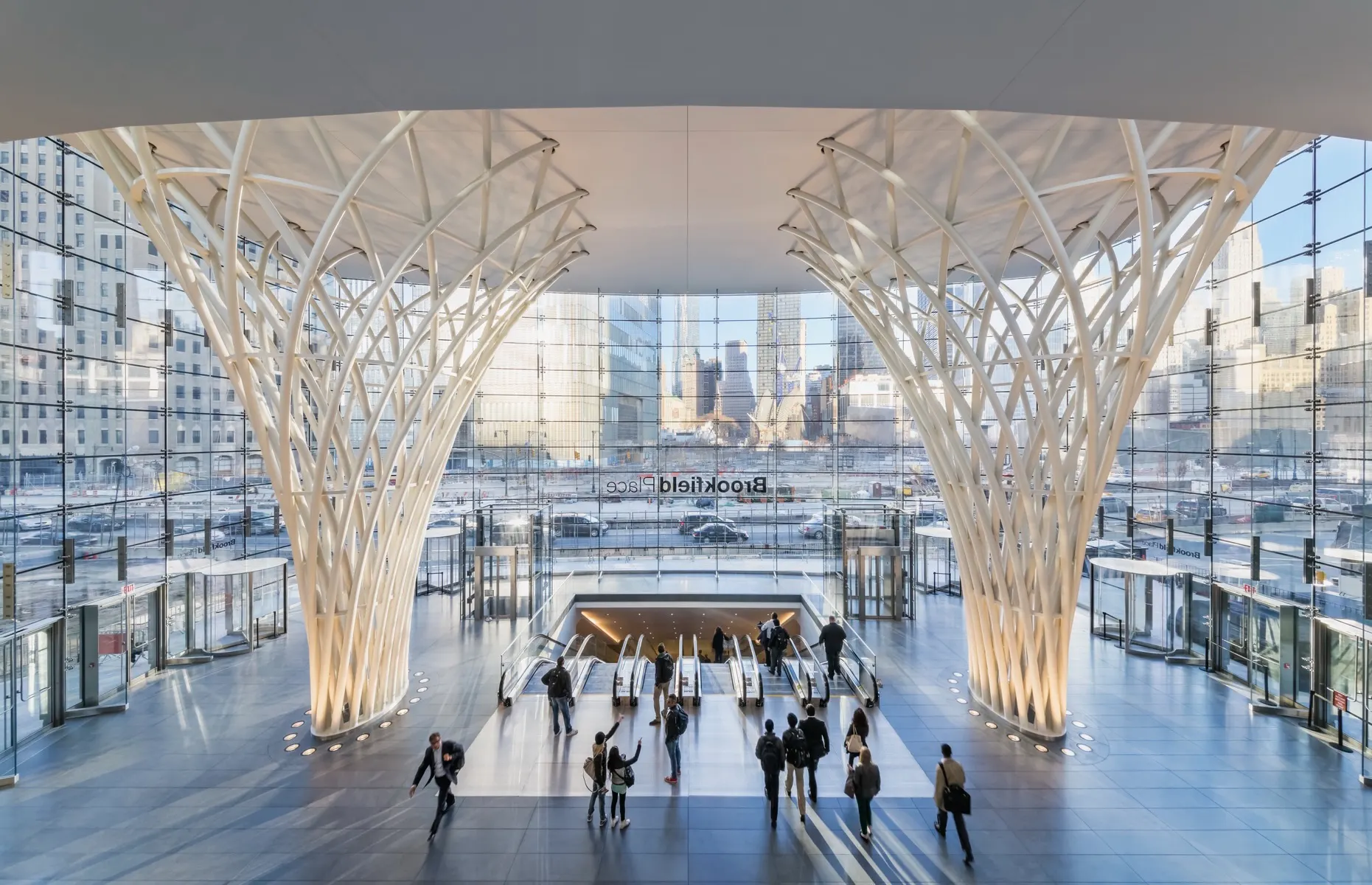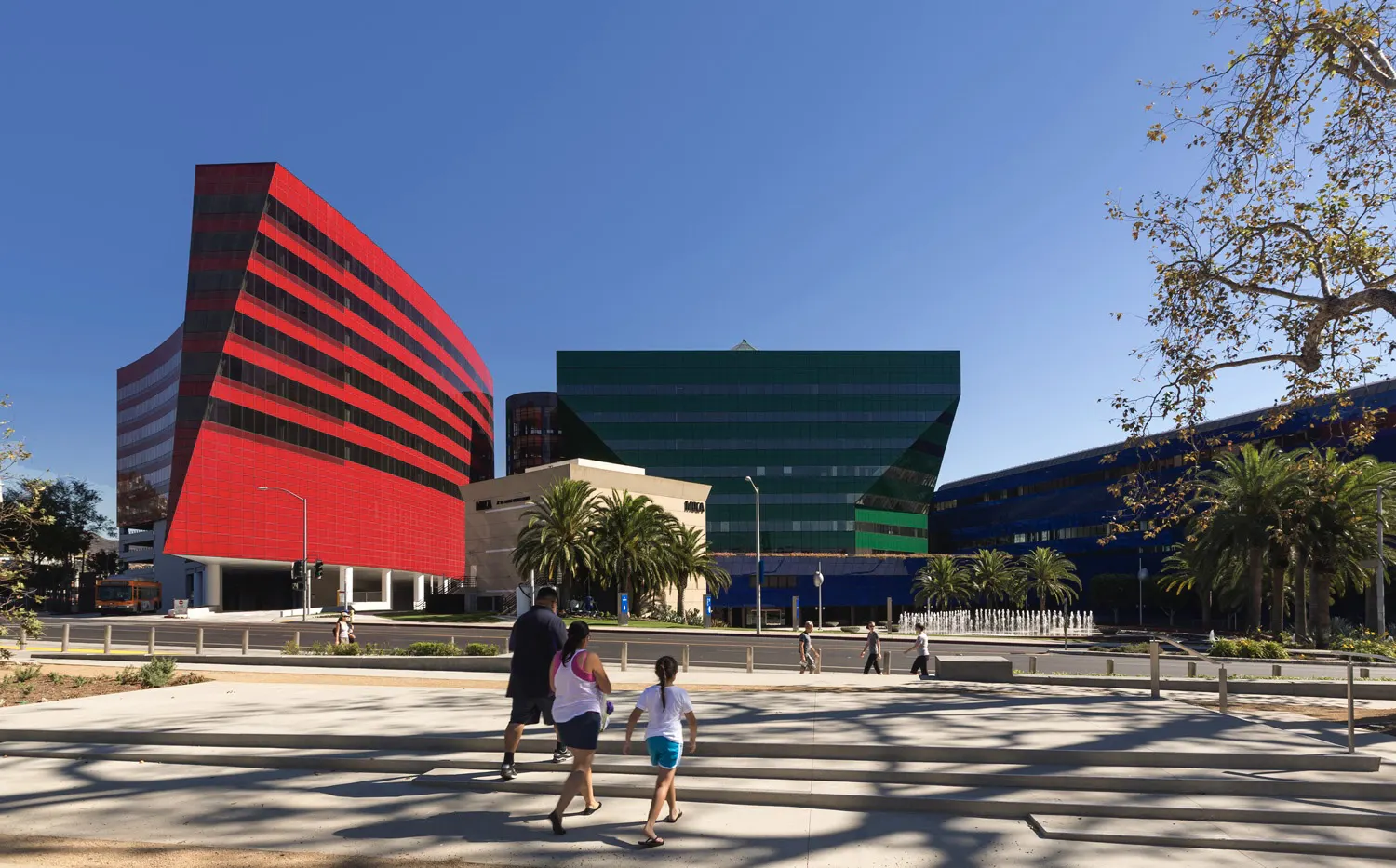Pelli Clarke & Partners’ Transition Follows a Script

Architects & Firms
No one will mistake the succession going on at Pelli Clarke & Partners (PCP) with the fictional one at Waystar Royco that played out over four seasons on HBO. While both the architecture firm and the entertainment conglomerate are global in scope, the media attention is significantly lower and the bad blood nonexistent in the Pelli family saga. The lack of drama as PCP ushers in its third generation of leadership underscores the careful planning behind the firm’s recent moves.
In July 2023, the firm promoted Graham Banks, Jimmy En-Ming Chang, Kristin Hawkins, and Peter Follett to the rank of partners, bringing a group of younger architects into its top echelon. Four years earlier, Craig Copeland and Darin Cook had moved up to partner. The six architects gathered recently for a video interview and spoke about PCP’s evolution since the death of César Pelli five years ago this month. Fred Clarke, who cofounded the firm in 1977 with Pelli and Pelli’s wife, the landscape architect Diana Balmori, remains active but will become less involved in the near-future. Balmori passed away in 2016.
-(1).webp)
Chengdu Museum of Natural History (2022) Photo © Arch Exist
What began as César Pelli & Associates became Pelli Clarke Pelli in 2005, as César’s son Rafael assumed a larger role, and then rebranded itself as Pelli Clarke & Partners in 2021. The firm employs about 100 people in five offices—its hubs in New Haven, Connecticut, and New York, along with studios in Shanghai, Shenzhen, and Tokyo.
“This transition has been in the works for close to 20 years,” said Cook. “It was César’s intention to develop a multi-generational firm that would extend into the future.” At the start of his career, Argentina-born Pelli had worked for Eero Saarinen, who died at age 51 without making plans for handing over the reins. While Kevin Roche and John Dinkeloo took over Saarinen’s practice, the master’s sudden death left an impression on Pelli, said Rafael in a separate interview. “It was part of his thinking.”
“César was always a teacher, so mentoring has been an essential part of the firm from the start,” stated Copeland. (César Pelli was dean of the Yale School of Architecture from 1977 to 1984 and maintained a strong relationship with the school afterward.) Though the firm had Pelli’s name on the door, “It was never a one-man band,” said Banks. “It’s a collective effort.” Hawkins remembered a meeting when she was a young associate and Pelli turned to her and asked, “Kristin, what do you think?” “I was terrified, but grateful,” she said with a laugh.

Salesforce Tower, Chicago (2023). Photo © Jason O'Rear
Not many architecture firms make it to a third generation and those that do often morph into practices quite different from the original. The challenge is particularly tough for firms closely identified with one individual. But Pelli established a collaborative process and insisted that the firm not develop a “signature style.” By remaining modest in size, the firm has found it easier to retain its original DNA. It takes on only about a dozen new projects each year and focuses on ones that can contribute to communities and cities. “We look for the right matches,” stated Cook. “One of the advantages of staying small is it allows us to remain consistent and maintain a local touch on each project,” explained Copeland. By collaborating with other firms, PCP doesn’t have to grow big. “We’re small, but mighty,” added Hawkins.
“The partners we have selected are people who have performed at the highest level,” explained Rafael Pelli. “Each partner is very hands-on, just as César was. This involves executing great design, communicating with clients, and delivering buildings that create an emotional attachment. We want partners who embody our values.”

Aria Resort & Casino, Las Vegas (2009). Photo © Jeff Goldberg/ESTO
Leadership changes will continue as Clarke moves to an emeritus role in the near-future and Pelli does the same in about five years. “We’re not considering a hard retirement age, but it’s important to have regular successions,” said Pelli. “In 10 years, we want to have identified a fourth generation that’s ready to take over.”
The firm is currently owned by seven of its partners but is considering instituting an employee-stock-ownership plan, Pelli added. The goal is to promote broad participation in the firm. “We haven’t made any decision, but it interests us and seems to fit with our ethos.”
The firm works with a range of project-delivery methods, including design-build and the more traditional design-bid-build process, so it doesn’t have to do all tasks on all projects, said Follett.

1

2
Kristin Hawkins (right) (1); Darin Cook (2). Photos © Enzo Figueres
Over the years, PCP has developed an expertise in high-performance building envelopes and finds this particularly useful today as curtain-wall technology continues to evolve. “We see a streamlining of technology today and a more seamless process of constructing and coordinating projects,” said Cook. “There’s a blurring of project stages.”
New technologies, such as artificial intelligence, are also reshaping the firm’s practice. “We’re embracing the possibilities of AI,” said Chang. With such digital advances, the firm often “looks to our younger staff,” Chang added. “We give them a voice at the table.” While the partners don’t want technology to be the tail wagging the dog, they see it as an important tool to be applied wisely. “Clients look to us to provide clarity, vision, and a sense of meaning to complex projects,” noted Cook.
Unlike some firms, PCP does not split design and management responsibilities between different sets of partners. Involving principals in all aspects of a project was important to Pelli and remains so to PCP today. The firm engages young associates in the full range of project responsibilities, so knowledge is passed on from one generation to the next.

Brookfield Place, New York City (2013, 2021) Photo © Jeff Goldberg/ESTO
Partners and associates at the firm also do not specialize in particular building types but instead work on all kinds of projects. “We don’t want to create silos,” said Cook. “We want to develop cross-typology expertise. We find that working on an apartment building, for example, can help in designing a high-tech office tower, especially these days when clients want to bring aspects of residential and hospitality design into the workplace.”
Such knowledge also helps in repositioning or adapting older projects, said Copeland. For example, the firm was hired to rethink the Winter Garden and retail spaces at the World Financial Center in New York’s Battery Park City, turning a project the firm had designed in the mid-1980s, into the Brookfield Place shopping and dining complex. The goal was to make it a center for Lower Manhattan, not just the office workers at the WFC. A similar thing happened when PCP designed the Red Building in 2012 at the Pacific Design Center in West Hollywood, 37 years after Pelli created the Blue Building (a.k.a. the Blue Whale) at the complex when he worked at Gruen Associates. “Cesar saw the Red Building as a way to re-energize the entire project,” stated Copeland.

Pacific Design Center, West Hollywood (2012, Red Building). Photo © Jeff Goldberg/ESTO
With the addition of the latest six partners, PCP now has 14 partners , two of whom are women and none are Black. Employees hail from 20 countries and speak 18 languages, though, according to the firm. “Like the entire profession, we need to do better in terms of diversity,” admitted Cook. “It’s a struggle for the profession.” Architecture is a force for social change, said Hawkins, so it’s important to have diverse perspectives and “express the people and culture of the places where we work.” Hawkins said she tries to mentor younger women in the firm, “just as Diana [Balmori] did for me.”
The partners said they feel a great responsibility to carry on Pelli’s design legacy. “The challenge is: How do we keep it going while evolving and changing,” stated Banks. “We’re honored to pick up the mantle and carry it forward,” added Cook.


